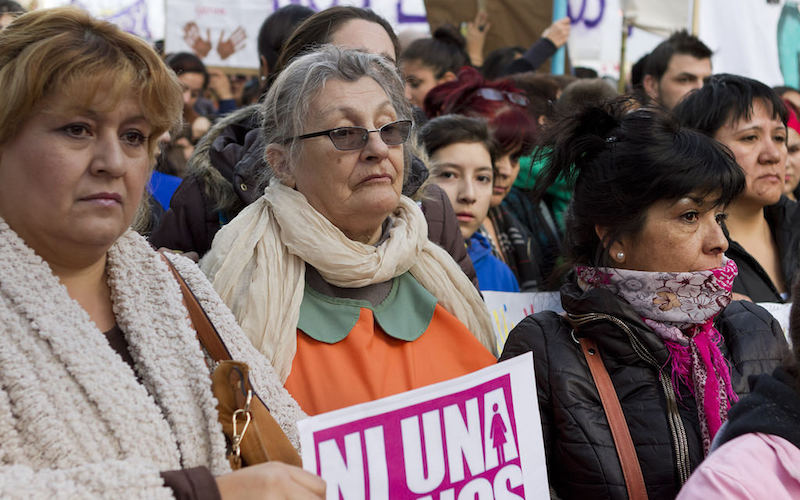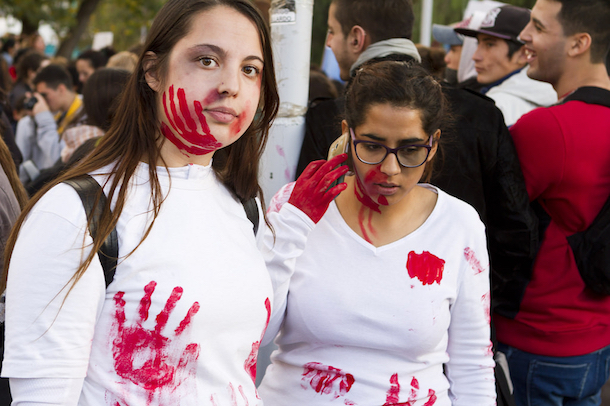
Latin America’s War on Gender Violence
Women’s rights have experienced historic progress over the last decades. Now more women than ever occupy leadership positions in areas such as business, military, science and politics. Many countries uphold a woman’s right to an education and vote. The United Nations designated 1976 – 1985 as the Decade for Women. Progress can be witnessed in first, second and several third world countries, including those of Latin America. Yet has it been enough?
According to the International Labor Organization, in about two decades women will occupy 50% of the workforce in Latin America. They currently control 67% of all purchases. And while there are more female leaders here than ever, fighting for women rights in this developing region is not complete. Rampant gender-related violence reaffirms this reality. Fourteen Latin countries rank in the top 25 for crimes against women.
Crimes of passion, killings due to an unexpected pregnancy, stabbings during theft and beheadings after a divorce are but a handful of examples. In Argentina alone in the last seven years 1,808 women were reported murdered due to gender violence. In Brazil, 15 women on average die per day. And in Mexico – a state engulfed in significant socio-political and economic crises – the National Citizen Femicide Observatory of Mexico documents 3,892 women killed across its territory. These losses leave thousands of orphans, some forced to live with their mother’s murders. Of these killings, only a sixth were investigated as femicides.
While the term “femicide” does not exist in most dictionaries, it is part of the penal code of 16 Latin American countries. Yet while the number of gender-related crimes remain high, official statistics are scarce, and judicial systems are often slow to prosecute a man for this crime. Even though millions of women, hundreds of NGOs (Non Governmental Organizations) and all governments recognize this continued injustice, the crime is outpacing policy.
One pivotal example recently occurred in Argentina. Last week, an unprecedented mobilization that included a hundred cities and towns set this theme at center stage. Thousands launched the motto “Ni una menos” (“Not one less”) to protest rising femicide and violence in general against local women and girls. Their demands were unanimous and have circulated across different Latin American states for years: not one more woman killed by her current or former partner or random street criminal without state protection. Currently, support from police, when the abuser is reported, is given, and these victims still fear for their safety and lives.

The image of Eva Peron – the wife of Argentine historical icon General Juan Peron – was used during these protests as a symbol as both Perons supported gender equality and many modern Peronists continue to uphold this mission. Ironically, one of the “Ni una menos” movement’s central demands was the National Plan of Action for the Preventions and Eradication Assistance of Violence Against Women, which was adopted eight years ago by Peronist President Cristina Fernandez de Kirchner, but has still not come into full force. Even more incongruously, according to figures supplied during the protest, in 2008 (the second year of Fernandez de Kirchner’s first term), there was a femicide every 40 hours in the country of 43 million people. In 2014, the crime increased to one every 30 hours.
Other countries host similar issues. An Economic Commission for Latin America (Cepal) report on femicide indicated that in 2014, 88 women were killed by their partners in Colombia; 83 in Peru; 71 in the Dominican Republic; 46 in El Salvador; 25 in Uruguay; 20 in Paraguay, 17 in Guatemala and 16 in Chile. The ranges vary, as do the governments’ responses.
In Brazil, Dilma Rousseff – the first women head of state in her country – has lamented that “we know that 15 women die every day in Brazil just because they are women” and that it “occurs in all social classes.” “The whole society is assaulted when a woman is attacked,” she added.
Consequently, her administration has enacted a zero-tolerance law that includes femicide in the Criminal Code. This Maria da Penha law was named in honor of the Brazilian biopharmacist and women rights activist abused by her husband who tried to kill her twice, one attempt by gunshot and another through electrocution.
Legislative measures for women’s protection have also expanded in other Latin American countries. In Ecuador, last year’s femicide count was 97 corresponding to the 54% of women who suffered violent deaths (179). Femicides are now punishable with 22 – 26 years in prison. Costa Rica recorded 27 cases last year and also implemented a 20 – 35 years in prison for the crime. Their femicide rates are now decreasing. Other progressive countries – such as Uruguay – are taking note of this success and is preparing a bill to criminalize femicide as well. How long will Latin American women have to wait for these measures protecting their lives to become mainstream?

